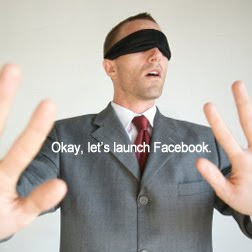
A few days ago, one of the local restaurants we work with was reviewed by the area's most critical reviewer at the largest area daily. The review was a pleasant surprise. While the general manager sends out news releases from time to time, he hadn't lately.
There was no release. There was no pitch. Instead, what prompted the reviewer to visit was the consistent stream of direct-to-public communication across the restaurant's social media program. There was no other communication, which made me think about how media relations has changed.
Traditional Media Relations For Restaurants.A public relations firm would prepare all the necessary content for the restaurant, sometimes in the form of a media kit. And then, depending on the retainer, it would either pitch or send press releases to area dailies to secure a review. Sometimes it would over communicate the need, especially if it counted column inches as justification for the retainer.
Eventually, the reviewer (hopefully not aggravated by the constant contact), would visit the restaurant on one unspoken condition. Once they entered the restaurant, all claims of being influenced by the relationship were off. Only the quality of the food, decor, and service would remain.
If the restaurant was having a good day, the review would be positive and the public relations firm would claim credit. If the restaurant was having a bad day, the review would be negative and the public relations firm would wash its hand of responsibility while counting those negative impressions as having the same value as positive impressions.
Regardless of the positive or negative nature of the review, the public relations firm would also be charged with making sure all the background information and necessary photos were delivered (unless the reviewer took pictures and/or arranged a photographer after the fact). And, once the review ran (assuming it was positive), everybody — meaning the firm and the restaurant owners — would throw up their hands in celebratory delight.
And that is where it ends, with exception to public relations professionals finding new ways to convince the reviewer to come back. After all, most restaurants are not going to be reviewed every week (or even written about weekly, despite any news they might think up).
Modern Media Relations For Restaurants.Today, things can work much differently. A restaurant (possibly with the support of someone who knows social media) can publish direct-to-public communication about any variety of topics related to its cuisine. This is significantly different than press releases and pitches because none of the communication is wasted. All of it goes somewhere.
In addition, these various messages not only reach potential patrons but also provide a direct opportunity for them to engage representatives of the restaurant. And, with almost certainty, some of these people might be journalists (assuming the the social media communicator is savvy enough to connect with them).
There is no pitch. There is no release. It's just a steady stream of positive and valuable communication. There is no pressure on the reviewers. They just read what they want when they want and promptly ignore the rest. Until, one day, they decide to visit.
They review the restaurant, either positively or negatively, based on performance. All the photos and background content are at their fingertips via the Internet. They save time and the publication saves money. No one has to follow up to ask how it went. Everyone will know soon enough when the review is published, and if it isn't published, no one will even notice.
Afterward, there may be an internal celebration. However, the celebration isn't where the communication ends. It's where the communication begins. Because the restaurant has a social media program, it can either explain why a review was bad (if they choose to) or share it with customers that already have a positive relationship with them.
They can also publicly semi-thank the reviewer, simply by being unafraid to share whatever they want. It's the best gift you can give a journalist; they don't want bribes as much as a chance to be read. But even more importantly, they would appreciate a little more attention to what they have written as opposed to when they might write something again.
Some Media Relations Is Built On A Weak Link.While this does not hold true for all public relations firms (some are good), it does hold true for many. The relationships they claim to have are weaker than most would admit.
While the press release might not be dead (especially as it pertains to news that is not yet public), the dynamic has changed. Journalists, much like anybody, prefer to discover news as opposed to having it pushed at them. And the public, especially those who are engaged, are genuinely happy when restaurants can validate fan experiences with a critical review.























